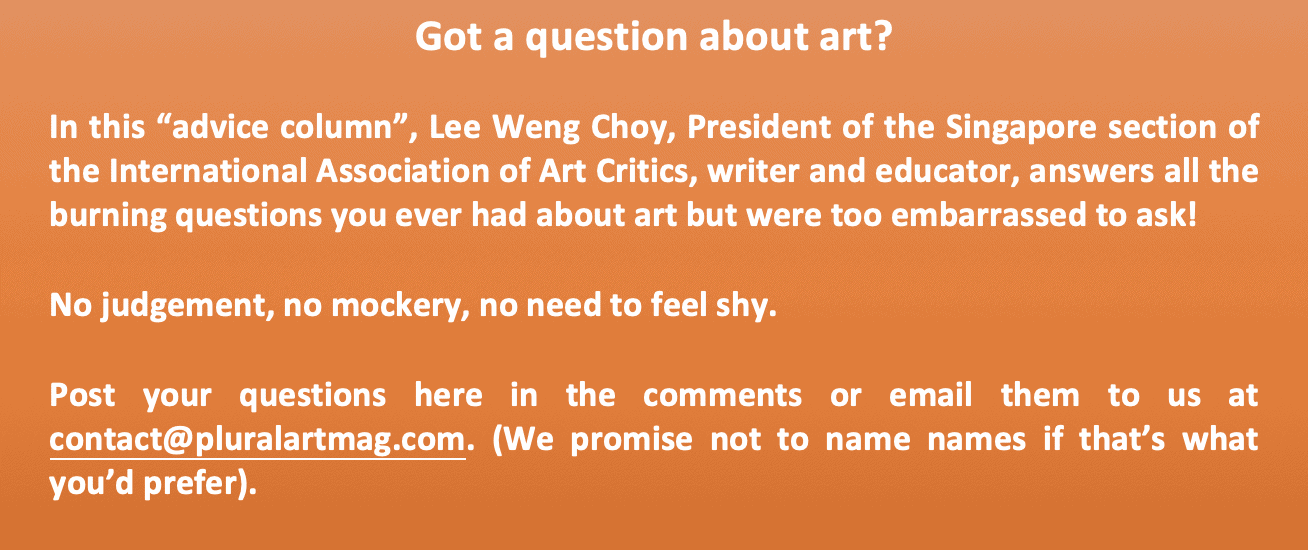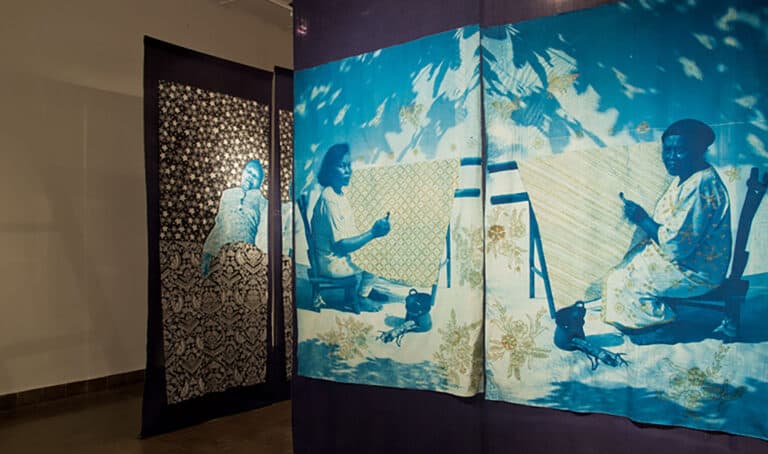
Question:
“How do you look at an art exhibition?”
Answer:
Let’s start with the obvious, though it’s no less true for being so. Be open-minded, curious and present when looking at art. Today, when there are so many distractions and demands on our attention, it shouldn’t surprise us that we aren’t always in the best frame of mind when we go to an exhibition. How many times have you found yourself looking at art, especially at an opening, and it’s as if you’ve forgotten to bring your curiosity with you – as if you left it at home, along with your glasses on the kitchen counter.
Admittedly, the following is not the best analogy, but going to see art can be like going for a walk in the woods. The reason I say it’s not the best, is because, generally, I’d advocate for an excursion into nature over one into culture. How can you beat trees! But the comparison reminds us that just as we might spend time in a forest to clear our head and become more present with ourselves, the same can happen when we look at art. Both should be immersive experiences, and both are practices of becoming more open-minded, curious and present. The word “practice” deserves a bit of elaboration. It’s not just making art that is a practice, so is looking at it. To practice something is to do it repeatedly, and, quite importantly, with intention and concentration.

My next point is perhaps less obvious: be self-reflexive when looking at art. We take seeing for granted. Much of what we see depends on what we look for and the baggage that we bring to the encounter. For instance, in a recent “Ask a Critic” column, on the topic of biennales, I made a criticism of a review of the 14th Sharjah Biennale. My suspicion was that the reviewer didn’t like the show because what he mostly saw was art that was unfamiliar to him. When he did see something that he could recognise, he appreciated it. But for the rest, it seems that he reacted rather than reflected, finding it all too noisy. There’s nothing wrong with disliking art, but disliking it because you’re not curious about it, well, then, that’s problematic.
Indeed, looking at art and culture is far from simple and straightforward. Consider another issue: what is the difference between looking at an exhibition versus looking at a single work. If you’re someone who regularly reads about art, you may have heard of the term “exhibition histories”, which is a relatively recent field. The idea here is that most of the time, artworks are seen in exhibitions, not as individual pieces on their own. And thus, when writing histories of art, one should therefore take these contexts of public display and exposure into consideration. Previously, art historians tended to overlook this factor.
The question is “how to look at an art exhibition”, but as you may have noticed, I’ve also been speaking about how to write about art and exhibitions. Just as there are countless ways to look at art, there are as many was to write about it. While I realise that not all of you, dear readers, may have the inclination to produce any art writing of your own, surely you’re interested in reading some of it. And reading writing about art is one of the best ways to learn for yourself how to look at exhibitions. As there is no one answer, it’s best to read many different texts.

To return to the issue of self-reflexivity. I’ve written a number of times about my own habits of viewing and writing. As an art critic, my tendency is to return to the same artists regularly, and itʼs much less often that I write about practices that are entirely new to me. I may not be surveying vast territories of art, but I am consistently looking, and the art I do find worth contemplating, I think about again and again. While I regularly write on the topic of biennales, I don’t like reviewing them; precisely because, in the latter instance, it’s typically about diving in, and not going very deep.
Writing about and reviewing biennales is a challenge. These events are typically massive — they may may feature over a hundred artists. They are complex and complicated, and have so many entry points, with so many themes and tangents. I am still not quite sure how to approach them. And if you do attempt to review one, then you’re expected not only to scan and report on the entire show, but also to single out the “best” works as well as dissect the curatorial direction, and all within the span of a short article. But the thing about writing on biennales is that the writing itself can become a way of learning how to look at and write about these major endeavours.
Writing about art, indeed, writing in general, can be a lonely business — but it doesn’t have to be that way all the time. Talking about your work with your fellow writers, sharing about your struggles and processes is all very healthy and good for your own practice.

Likewise with looking at an art exhibition. You don’t have to go alone. Go see it with a friend, and have a conversation about art. One last reminder: often the most important part of conversation is not the speaking, but the listening. Listen to your friend, and listen to the art, and maybe the whole experience can help open your mind, and help you become more curious and more present.











